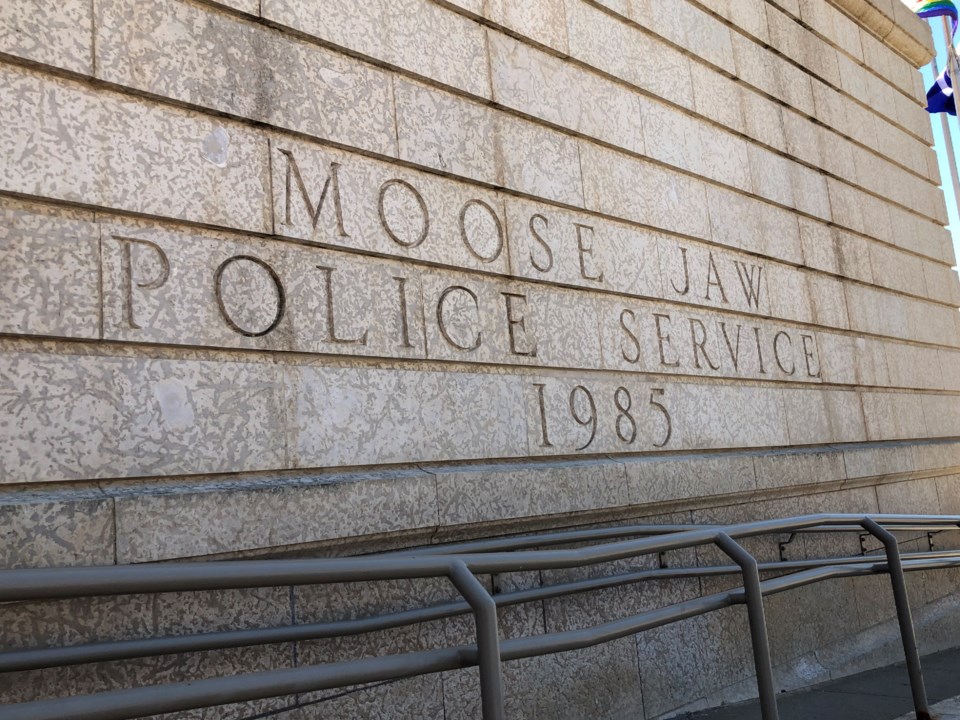Two Moose Jaw officers provided more details about Jeremy Sabourin’s suicide in detention cells two years ago, during the first day of a coroner’s inquest at Court of King’s Bench on April 15.
Const. Payton Denet had been working with the Moose Jaw Police Service for eight months when he volunteered to drive three prisoners — including Sabourin — to provincial court on Oct. 7, 2021.
He told the inquest that he wasn’t aware of a policy at that time that forced officers to search prisoners brought in from other locations or by other agencies — in this case, Assiniboia RCMP. Instead, his focus was on other policies since he had been on the job for less than a year.
Denet recalled going to the detention cells that morning and learning from commissionaires that Sabourin was complaining about health problems. He visited the Assiniboia man’s cell and told him to prepare for court; Sabourin said his lower back was in pain.
“I asked him straight up, ‘Are you lying?’ And he said no,” the constable said.
Sabourin was lying down but used his arms to lift himself onto the ledge behind him, almost like his legs wouldn’t work. He was also panting and had a pained expression on his face. The man asked for a wheelchair, but none was available.
“I asked him if he was actually in pain or whether he was just using this to not go to court. He said he was in pain, he was not going to cause any issues and he planned to go ahead with the process,” Denet said.
The officer closed the cell door and told his supervisor, Staff Sgt. — now Constable — Chris Flanagan, to see whether medical assistance was required before he put shackles on Sabourin and took him to court.
Flanagan came and opened the door, where — much to Denet’s surprise — Sabourin was in a seated position and not looking pained. The officer also saw the prisoner holding a pistol that was thin, long and silver, which he put into his mouth. Denet yelled to stop, but Sabourin mumbled something and pulled the trigger, prompting Flanagan to slam shut the door.
After recovering, the officers reopened the door, smelled smoke and saw a haze from the gunpowder. Denet also heard Sabourin gurgling and saw blood everywhere; the man was slumped over and still holding the gun. The officer grabbed the pistol and placed it outside the room, pointing at the wall.
Other officers came running and began performing First Aid on the man. Denet noticed a thin, elongated, custom-built brown holster clipped to Sabourin’s underwear on the right hip sticking out, so he took it and threw it out of the cell.
Denet also grabbed goggles and face shields to protect his colleagues from the blood, which was not only beside them but spitting out of Sabourin’s mouth.
This wasn’t Denet’s first encounter with a prisoner committing suicide, however, as he had worked at the Regina Correctional Centre before joining the MJPS.
Other offices took Denet and Flanagan to separate rooms as per policy so they couldn’t discuss what they had seen, which would ensure their future testimony wouldn’t be tainted.
Since this incident, the police service now conducts more in-depth searches of prisoners and always uses metal-detection wands, Denet added. Moreover, techniques about how to search prisoners have been added to officers’ training regimens, including how to check for weapons near the groin properly.
Responsibility for training
Const. Melanie Durrant next took the stand and said supervisors should be responsible for officers’ professional training standards and what they need to learn. However, officers can make requests to attend certain courses; she’s already taken several, including one to become a firearms instructor.
Meanwhile, in searching prisoners before Sabourin died, she didn’t recall having to use metal detectors on every prisoner. Officers searched people but did not use the wand on everyone.
Durrant couldn’t explain why that wand-use policy wasn’t followed or enforced but believed the problem was due to a “trickle-down” effect of role responsibility, usually starting with staff sergeants. Meanwhile, she learned of changes to policies via emails from administration, while members sometimes had to sign off on what they’d read.
On Oct. 7, Durrant was in the garage when she received an urgent radio call and knew something was wrong. So, she ran to the cells to see Sabourin lying on the ground, not breathing and showing no signs of life.
She remembered flipping him over and helping start CPR, which “felt like an eternity but probably last 30 minutes.” She saw a small hole or protrusion above his left eye, which was particularly bloody. She and others did everything they could to save Sabourin, but nothing helped.
Afterward, an escort officer took her to another room, similar to Denet and Flanagan, to prevent them from speaking about what they’d seen.




